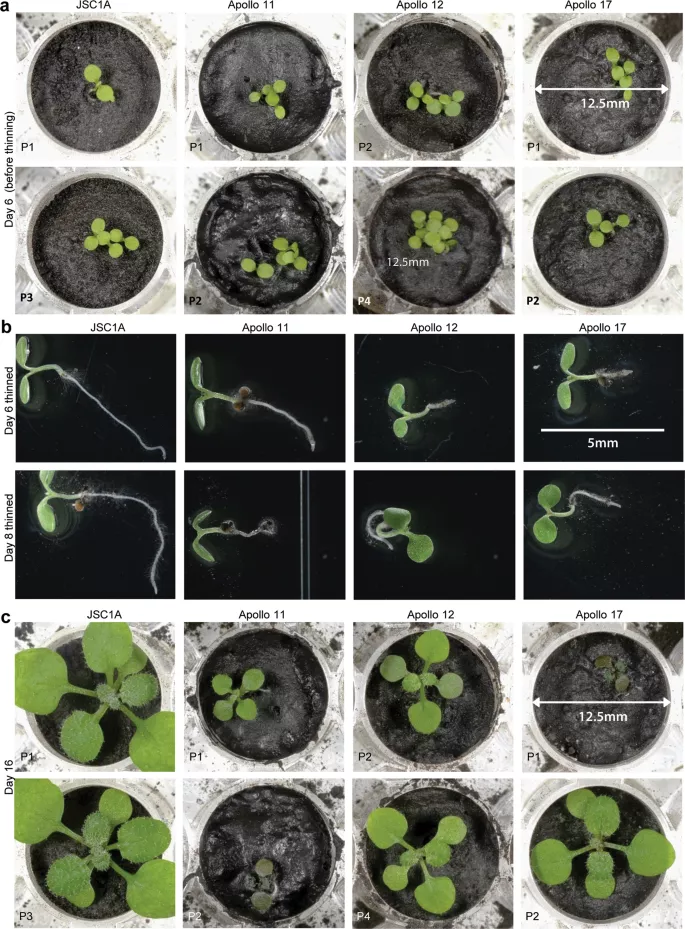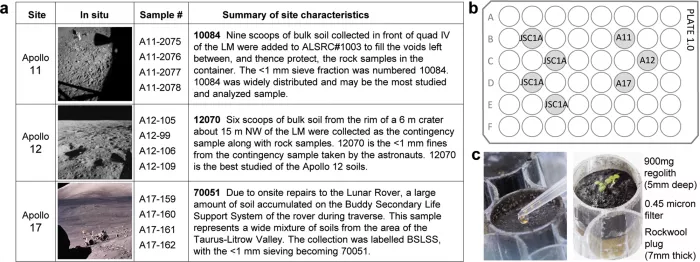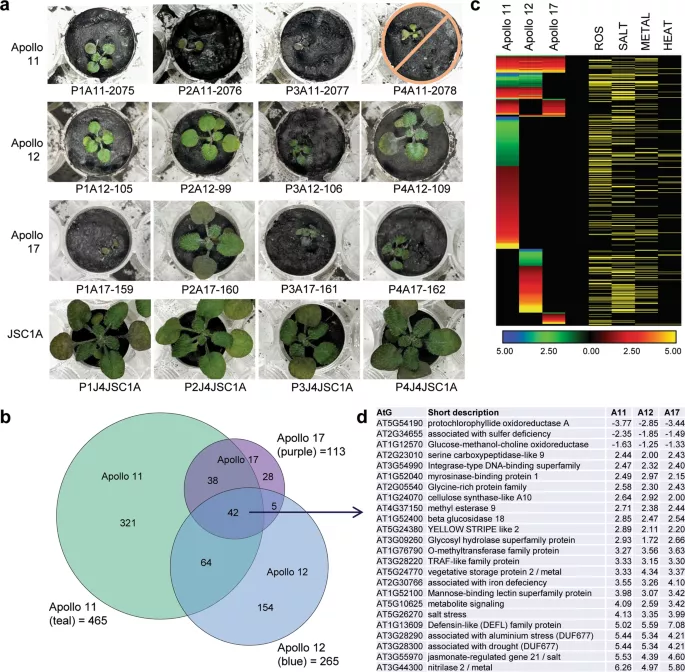According to CNET, according to a new study, when NASA sends Artemis astronauts back to the lunar surface in the next few years, they are expected to be able to grow their own vegetables. This is just one of the results of a historic experiment in which scientists successfully planted plants on earth using samples of lunar surface materials called "lunar soil"**

The seeds of the mustard related plant Arabidopsis thaliana were placed in tiny lunar soil samples collected during three different Apollo missions half a century ago. Although these seeds germinate and grow, they do not fully thrive.
"The lunar soil doesn't have many nutrients to support plant growth," Stephen elardo of the University of Florida said at a news conference on Wednesday

Elardo was published Thursday in communication biology 》Co authors of a paper in the journal introducing the study, as well as Anna Lisa Paul and Robert ferl.
Although the way these plants grew showed that they were under pressure, they still found a way relatively quickly, with the help of the team providing them with light, water and nutrients.

"Two days later, they began to sprout!" Paul, who is also a professor of Horticultural Science at the University of Florida, said in a statement. "Everything sprouted. I can't tell you how surprised we were! Every plant -- whether it's a lunar sample or a control group -- looked the same until the sixth day."
At the end of the first week, plants in the lunar soil showed slow birth growth, stunted roots and leaves, and some red spots. Later genetic analysis will confirm that these green plants are under pressure.

The particles of lunar soil are very fine and powdery, but these particles also have sharp edges. Breathing lunar dust can damage the lungs, and these things are not particularly good for plant life.
Paul added: "ultimately, we hope to use gene expression data to help solve how we can improve the stress response so that plants - especially crops - can grow in lunar soil with little impact on their health."
Ferl said that planting plants on the moon is the key to a long-term stay on the moon. It not only helps to provide food for astronauts and other visitors, but also helps to provide clean air and water.
"When we go to space somewhere, we always take our agriculture with us," said fer, also from the University of Florida. "Showing that plants will grow in lunar soil is actually a big step in this direction."